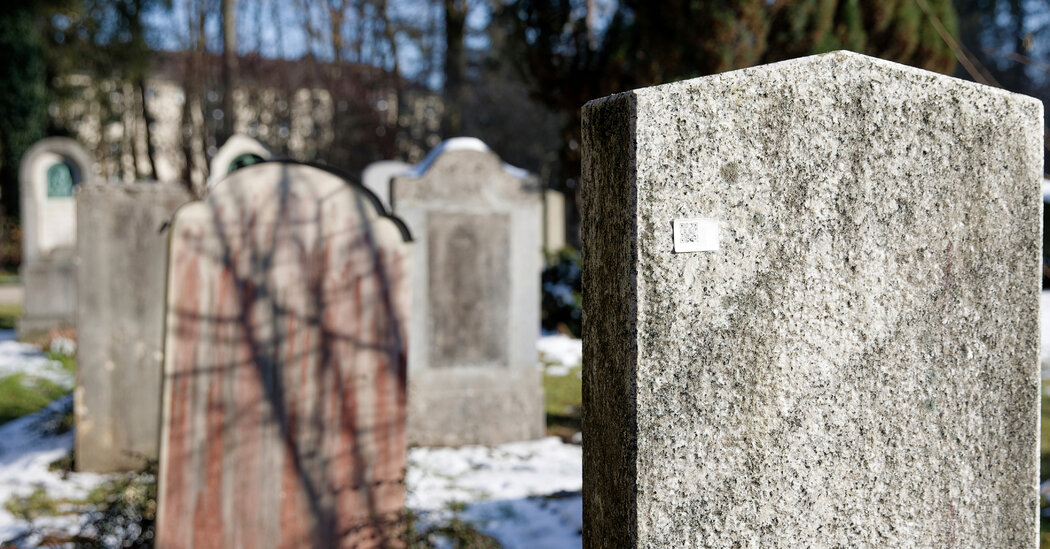In a wooded cemetery in Munich, a white sticker with a puzzling QR code appeared on a gravestone late last year.
Then, over the next few weeks, more and more stickers mysteriously appeared, until more than 1,000 graves were marked like goods in a supermarket.
“It’s really strange,” Bernd Hoerauf, who oversees the management of the city’s cemeteries, said in an interview this week. “We thought, ‘What could be the sense of this kind of sticker?’”
Each of the white rectangular stickers, measuring about 1 by 2 inches, bore a black QR code, a last name and a combination of letters and numbers, according to images published in the German press.
Cemeteries in Munich allow QR codes as memorials on headstones, Mr. Hoerauf said, and for more than a decade, people whose loved ones are buried in cemeteries around the world have uploaded photographs and other digital keepsakes to create online memorials that can be viewed via QR code.
But those are usually etched into the gravestone or carved as a metal plate to form a deliberate part of the memorial to the deceased.
The recent appearances in Munich also raised eyebrows because in 2004, stickers appeared in a Jewish cemetery in Bochum, a city in western Germany. Those turned out to commemorate Rudolf Hess, a senior Nazi leader who served as Hitler’s deputy. The stickers appeared to be linked to a far-right demonstration in the town of Wunsiedel, in southeastern Germany, according to the World Jewish Congress.
In this instance, though, the graves were not linked by religion, ethnicity or any other discernible personal characteristic of the deceased, Mr. Hoerauf said.
City workers first came across the QR codes in December, and scanning them revealed only the name of the deceased and the grave’s location — essentially repeating the information on the sticker, but providing no other useful information, Mr. Hoerauf said.
The stickers popped up in Waldfriedhof cemetery, a wooded space with some 60,000 graves, and in the nearby smaller Sendlinger Friedhof and Friedhof Solln cemeteries, Mr. Hoerauf said.
They seemed to be posted randomly, he said — on old and new graves, on carved tombstones and wooden crosses.
Bewildered municipal workers initially recorded the sightings as they tried to figure out the source of the stickers.
They were also looking at a steep price to remove them, Mr. Hoerauf said: anywhere from 100 to 500 euros (about $104 to $523) per sticker to strip the adhesive without damaging the graves, a total potential cost of roughly €500,000, he said.
So this week, the municipality turned to the police to investigate a criminal case of property damage.
They quickly found that a local business that had been contracted to clean and maintain certain graves was behind the QR codes, the police said on Thursday. The relatives of the deceased whose graves were marked with them would be notified during the inquiry, an investigating officer said in an email.
The police would not name the company or share details about how they had found the perpetrators, but the German news media identified a gardening company as being responsible.
The Süddeutsche Zeitung newspaper cited Alfred Zanker, a senior manager at that company, as saying that the stickers were simply a way for employees to keep track of which headstones they had maintained.
“We are a large company,” he told the newspaper. “Everything has to happen in an orderly manner.”
The police declined to comment further, citing the continuing investigation.


